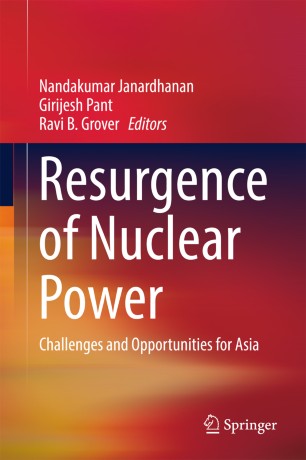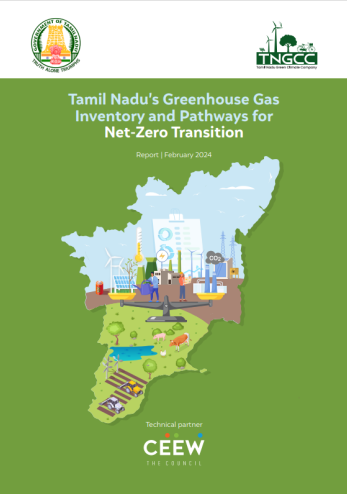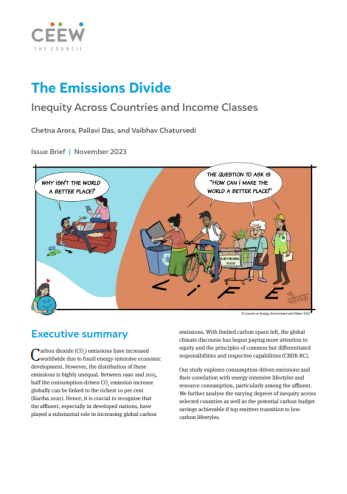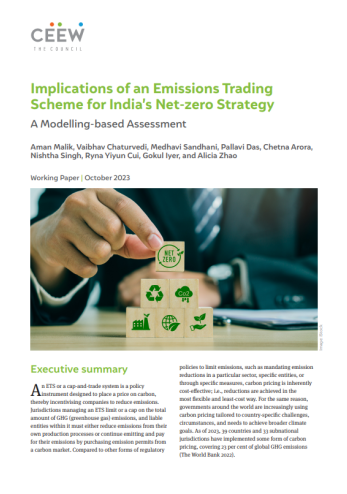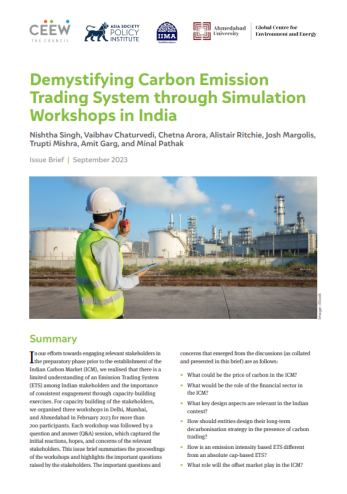Book Chapter
A Perspective on the Cost of Nuclear Energy
Vaibhav Chaturvedi, Priyadarshi R. Shukla and Karthik Ganesan
October 2017 | Low-carbon Economy
Suggested citation: Chaturvedi, Vaibhav, Priyadarshi R. Shukla, and Karthik Ganesan. 2017. “A Perspective on the Cost of Nuclear Energy.” In Janardhanan, Nandakumar, Girijesh Pant, and Ravi B. Grover, eds. Resurgence of Nuclear Power: Challenges and Opportunities for Asia. Singapore: Springer.
Overview
The paper seeks to inform the nuclear debate in Asia from an analytical viewpoint which also includes the implicit risks and costs that underlie the moral positions on this technology. It focuses on the historical increase in nuclear energy cost and explores the sensitivity of India’s long-term energy and climate change mitigation policy to further increases in nuclear energy cost. It analyses a suite of climate policy and nuclear energy technology cost scenarios within the integrated assessment modelling framework of the Global Change Analysis Model (GCAM). It considers six nuclear technology costs regimes ranging from reference cost to a complete nuclear shutdown scenario and two climate regimes - no climate policy and 2 °C stabilisation policy.
Key Highlights
- With the current expectations of nuclear-based electricity cost, which is almost double of electricity cost from coal-based power plants, nuclear energy is competitive even in the absence of global climate stabilisation policies.
- However, if costs increase further, then the increase in nuclear energy deployment will be seriously curtailed in the short and long run. Economics then favours the increased deployment of fossil fuels, leading to a significant increase in carbon dioxide emissions.
- Lower nuclear energy penetration will hence increase the quantum of emissions that need to be mitigated for meeting potential emission targets in the future.
- Similarly, even under a climate policy world, nuclear energy penetration declines significantly under high-cost scenarios. However, nuclear energy is competitive in the long run even with high costs if global climate stabilisation policies corresponding to the global 2 °C stabilisation target is pursued.
- Nuclear energy can make a critical contribution to India’s energy security through the century under all climate stabilisation scenarios, thereby highlighting its importance in India’s long-term emission mitigation strategy.
- The peak year for Indian emissions under the climate policy scenarios shifts to 2050, a shift of 15 years towards the future, when the nuclear technology costs double or it is retired from the energy mix portfolio.
- In the medium run, till 2050, other low-carbon technologies come in place of nuclear and the effect on mitigation cost is minimal. However in the second half of the century, as the initial low-cost potential of solar energy and carbon capture and storage gets exhausted, mitigating emissions become increasingly expensive in the wake of higher cost or absence of nuclear technology.
- Abatement cost for India in 2090 as a percentage of GDP is 3.1 per cent with reference to nuclear energy cost and penetration, which increases to 5.1 per cent when nuclear energy technology is completely phased out.
Key Recommendations
- Indian policymakers need to keep a continuous and close watch on the cost of nuclear power plants and try to find innovative ways of reducing the cost to achieve the targeted share of nuclear energy in India’s energy mix.
- Domestically manufacture the labour-intensive components of nuclear power plants. Greater reliance on domestic technology will also ensure at least to some extent that the cost of nuclear power is under control compared to that of imported technology.
- Nuclear power plants need transparent and independent regulation. A transparent regulator must place public interest and not utility interest at the forefront.
- Indian nuclear energy policy should have a special focus on detailed response plans and readiness for each nuclear power plant site, and management plans for disaster preparedness and evacuation in case of any nuclear accident.
- Address the perception gap about the risks of nuclear power among stakeholders and concomitantly provide a credible and transparent analysis of the social benefits and risks.
The stakeholders with lower risk perception of nuclear energy would argue that with improved safety features safeguards and an inherently safer new generation of nuclear power plants, exclusion of the nuclear option would add significantly to the energy cost in India in all scenarios and more so in the stringent climate stabilisation scenario.




